Photographs: Babu/Chennai Subir Roy
With foreign trade now accounting for over 40 per cent of gross domestic product and the crucial psychological (through portfolio investment and stock market mood) and real role played by foreign inflows, there is no way the Indian economy can be out of step with the global whole, notes Subir Roy
India's economic minders, from the prime minister downwards, have all expressed the hope that the country will be able to get back to eight per cent-plus economic growth. The entire gamut of economic policies is being constantly examined to find out what mistakes have led to the slowdown that is pointing to five per cent growth in 2012-13 -- a throwback to the pre-reform 1980s.
But there is a case for arguing that moderately good growth of, say, six or seven per cent should be realistically targeted since higher growth may not be sustainable.
So discussions on growth should not just focus on absolute numbers but also address issues of durability and quality.
First, why should high growth not be an end in itself?
. . .
For India, high growth is now a mirage
Image: A village woman holds her child while carrying clay on her head as she works at a road construction site under National Rural Employment Guarantee Act.Photographs: Rupak De Chowdhuri/Reuters
After all, 8.5 per cent average growth can double incomes in as many years -- surely desirable in a poor country like India.
But the reality is that high growth for any length of time is no longer in India's hands. Both the high growth in the 2003-08 period and the slowdown thereafter have coincided with a global boom and bust.
With foreign trade now accounting for over 40 per cent of gross domestic product and the crucial psychological (through portfolio investment and stock market mood) and real role played by foreign inflows, there is no way the Indian economy can be out of step with the global whole.
So, for the Indian economy to grow fast, pray that the rest of the world does so by its own standards.
. . .
For India, high growth is now a mirage
Image: A worker carries surveying equipment at a road construction site on the outskirts of Jammu.Photographs: Mukesh Gupta/Reuters
That the Indian economy is in step with the rest of the world is indicated by clear signs of a slowdown in China.
But China's per capita income is well over three times that of India's, and so the economies may not be at the same stages of development.
All the miracle Asian economies have sustained very high growth at their early stages of development.
So it may be more appropriate to compare India with Indonesia, which is currently ahead of India in growth.
. . .
For India, high growth is now a mirage
Image: Vehicles are seen in a traffic jam during rush hour in Mumbai.Photographs: Danish Siddiqui/Reuters
Here we run into another current reality: the role commodities play today, unlike in earlier decades, and also the case of Indonesia in this regard.
It is trade-surplus, being a key exporter of palm oil and coal, whereas India is the reverse. This is particularly illustrated by coal.
The imposition of a minimum export price for Indonesian coal has sent for a six the economics of India's mega power projects based on imported coal.
Higher power rates are now being written into the Indian economy's numbers, affecting its competitiveness.
. . .
For India, high growth is now a mirage
Image: A village woman holds her child while carrying clay on her head as she works at a road construction site under National Rural Employment Guarantee Act.Photographs: Rupak De Chowdhuri/Reuters
Beyond this, there is a wider global relationship between commodity prices and growth. In a boom period, commodity prices rise in tandem with global demand until a tipping point comes -- after which global growth falls, bringing down commodity prices in its wake. Recall, for both the global economy and India, the peaking of oil prices in early 2008, followed by a fall in growth and also in oil prices.
(The financial crisis, of course, also played a key role in this global boom-bust episode, but finance rode on easy money, which fuelled growth.)
India is in a Catch-22 situation.
. . .
For India, high growth is now a mirage
Image: Workers fasten iron rods together at the construction site of a bridge on the outskirts of Jammu.Photographs: Mukesh Gupta/Reuters
It can experience high growth only when the global economy is also growing well. But that brings on a global energy prices boom, which is detrimental to an energy-deficit country like India and puts paid to its high growth.
If only modestly good growth of six or seven per cent is sustainable for India, then policy should try to make the best of this, instead of seeking to get back to eight per cent-plus growth. High growth has till now been seen as a great enabler.
It gives the government the resources to build infrastructure and intervene in favour of the poor.
. . .
For India, high growth is now a mirage
Photographs: Reuters
While infrastructure costs are more or less given, much can be done to improve lives at relatively low cost.
The policy choice is starkly brought out by those who say the food security law is an unnecessary costly misadventure.
Instead, it will be more beneficial to invest in sanitation and safe drinking water -- both deliverable at lower costs.
There is even a way of getting more without spending more -- by ensuring that the rural jobs programme creates enough water management assets such as excavated ponds and small check dams.
This can raise agricultural productivity, incomes and living standards in rain-fed areas.
So, policy focus should shift to targeting modestly good growth and using its fruits to improve lives.


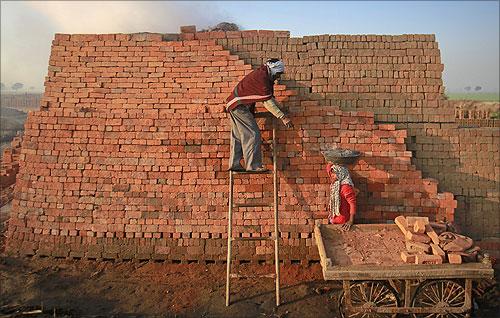
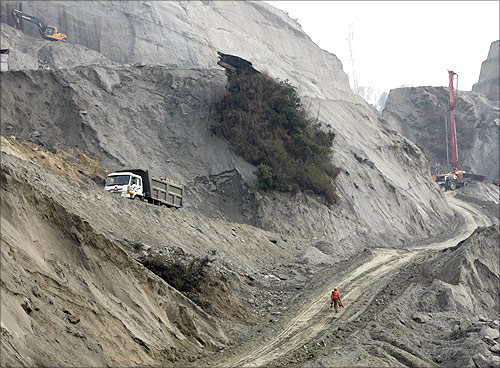
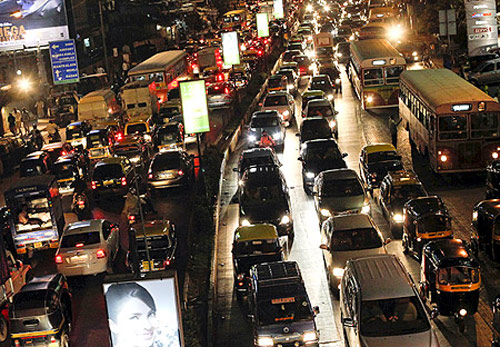
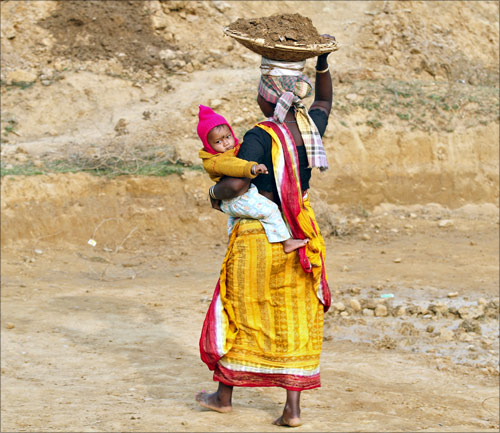
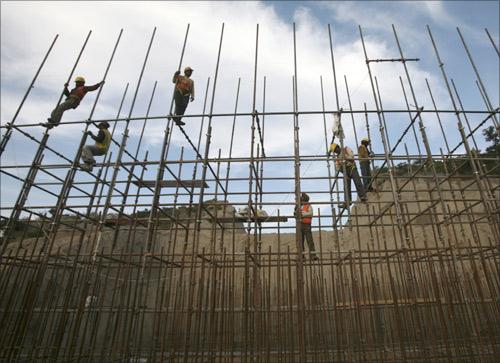


article